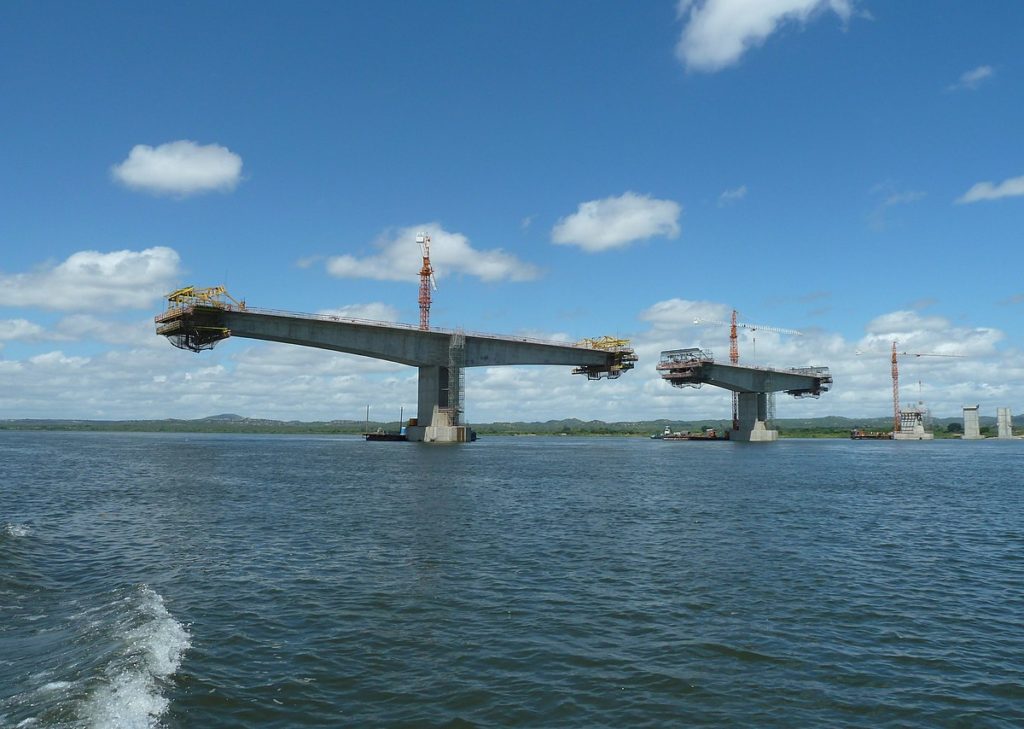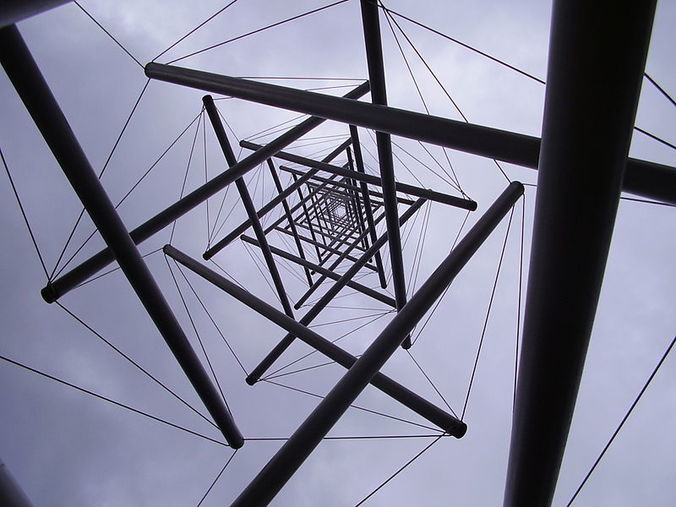Tensegrity
Have you ever wondered how in the world dinosaur necks function despite the fact that some are longer than a school bus? It’s a great question. If the animal’s neck were in a vertical position most of the time, we would say that it is supported by its neck vertebrae. However, some of these species of dinosaurs, Amphicoelia Fragillimus, for instance, were over 200 feet long, with necks known to be over 60 feet long —- necks that undoubtedly stayed in a horizontal position most of the time.
Although many experts want you to believe that the dinosaur’s ability to hold its neck up is a simple feat of evolutionary engineering (A TRUE OXYMORON to say the least), standard engineering techniques such as “Cantilevers” and “Suspensions” no more explain this phenomenon than standard Newtonian Physics can completely explain a nuclear reaction.
Let’s look at how most scientists believe the neck of a dinosaur is supported.
CANTILEVERS


SUSPENSIONS

Cantilevers provide support via anchoring to something rigid, but only at one end. This allows for long rigid, overhanging, structures to be accomplished with seemingly little support. Notice how rigidity (extreme rigidity) is a necessary component of a functional cantilevered system. If any part of the structure’s framework is not rigid, cantilevering is impossible.
Suspensions work via towers that suspend cables which are then anchored to each end or section of a bridge. Again, rigidity is a necessary component of all but the cables in suspensions. But what about a 60 foot dinosaur neck, which while muscular, is not rigid in any sense of the word?
How do either one of the above properties of engineering explain a dinosaur’s ability to hold up a 60 foot long neck? As we just said, both systems only work with rigid materials (airplane wings, a wooden deck, a concrete foundation, structural beams, steel cables, concrete towers, etc). And the longer the structure being worked with, the taller, stronger and more heavy-duty the towers and supports need to be. Large suspensions will also require lots of incredibly strong / heavy supporting cables.
But what about living tissues — particularly soft tissues (CONNECTIVE TISSUES) that do not contain the kind of rigidity needed under the old models? Bottom line, we cannot explain a dinosaur’s ability to hold up its neck using outdated BIOMECHANICAL MODELS. Enter Tensegrity.
TENSEGRITY (TENSIONAL INTEGRITY)

The term “tensegrity” was coined by American theorist, architect, designer, author, engineer, and inventor, Buckminster Fuller (1895-1983). Tensegrity (aka Tensional Integrity, and sometimes called “Floating Compression”) is a term that describes, “The use of isolated components in compression inside a net of continuous tension, in such a way that the compressed members (usually bars or struts) do not touch each other and the pre-stressed tensioned members (usually cables or tendons) delineate the system spatially.”
Although my pea brain is not good enough to visualize what Dr. Fuller was saying, hang on because I will show you a couple of extremely cool videos. Although Fuller introduced this idea to the scientific / architectural community decades ago, it has been increasingly used by cutting edge scientists, physicians, and engineers, to describe cellular biomechanics. People who deal with bio-physics on a daily basis realized that current mechano-structural models of the body are outdated and too simplistic to provide valid explanations of what is really going on in the body.
What’s doubly amazing is that some of the members of this group (SPECIFICALLY DR. INGBER) have shown that dysfunctional fascia — fascia that has lost its tensegrity — is involved in all sickness and disease. That would be all as in all. But there are many others as well (TOM MYERS OF ANATOMY TRAINS is one that many of you may have heard of, along with DRS. JAMES OSCHMAN and HELENE LANGEVIN). And Dr. Jean-Claude Guimberteau was one of the authors of video clip below (some of it was taken from his Strolling Under the Skin, which is an extremely cool video of highly magnified fascia in action).
But is there any scientific evidence to back the model being touted by this growing number of scientists? A Google Scholar Search provides over 3,500 scientific articles on Tensegrity. This paradigm shift in the relationship between structure and function is radically changing the way that we think about both DISEASE PROCESSES and CHRONIC PAIN SYNDROMES. Tesegrity is an architectural concept that is the most accurate model of how cells function with each other on a structural level. One of the principles of Tensegrity is that the structure maintains its shape and function no matter what position (upside down, horizontal, etc) it is in. The videos below will show this.
All matter is suspended in a delicate balance between tension (pulling forces) and compression (pushing forces). I am supported by the ground; the tire swing my daughter is playing on hangs from the tree limb. There are no other ways to support something. Everything else is a mixture of tension and compression — push and pull.
In the body, the “Tensegrity Matrix” helps to explain some of the amazing relationships between distant structural components. It extends to the basic concept of the tissue response to injury far beyond the level of joint, muscle and ligament, to include all structures of the body as potential sources of mechanical, electrical, and chemical dysfunction, much of which is due to the fact that FASCIA ACTS AS ITS OWN NERVOUS SYSTEM.
To better understand this model, just visualize the various tissues of the body as being composed of interconnected geometric structures (see the video below or the animation above), which are constantly under a degree of both tension and compression. This “push / pull” relationship provides an inherent balance between motion and stability. From the video below, you can see how this new model is able to better explain whole body motion, joint motion, injury and injury responses, as well as the reason that the Fascial Adhesions that I deal with on a daily basis in my clinic, are so destructive to one’s health and have the ability to cause such severe pain (HERE).
When Connective Tissues loose their ability to adapt and compensate to their environment, they become chronically FIBROTIC. These fibrosis are not necessarily the Fascial Adhesions of trauma that we see in so many people (i.e visible scars), but instead are the result of day to day to day postural distortions and repetitive actions that many of us perform at work. When the Fascia looses its normal patterns of tension and elasticity, it can literally become overwhelmed by mechanical stress —- stress that translates, as we saw in yesterday’s Blog Post, into both Chronic Pain Syndromes and Various Disease Processes.
This is because Tissue Fibrosis (microscopic scarring and dysfunction) results in aberrations of the tissue’s mechanical as well as its chemical and electrical properties. Bottom line: whether symptomatic or asymptomatic, if you have connective tissue issues like FASCIAL ADHESIONS, TENDINOPATHIES, or VERTEBRAL SUBLUXATION, you are moving away from being a pliable, stretchy, elastic, and healthy creature, to one that is RIGID / STIFFENED / THICKENED, strained, and sick. In other words, tensegrity or loss of tensegrity causes pain and affects your health!
Real Life Tensegrity In Fascia
Model of Tensegrity In Fascia
If you are enjoying our site, be sure to like, share or follow on FACEBOOK.
